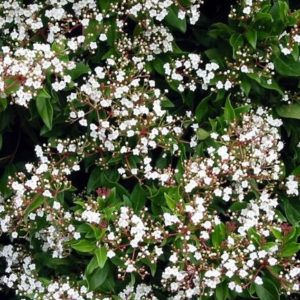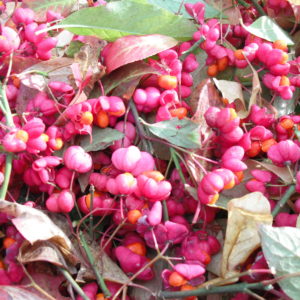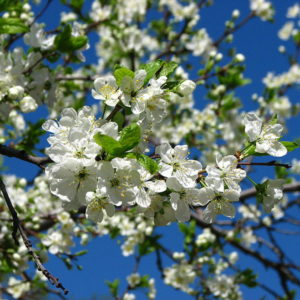-

Laurustinus Seed
Viburnum tinus£5.00 inc. VATAn extremely popular evergreen, medium sized shrub with masses of glossy green leaves. The white-pink budded flowers are borne from late autumn to early spring. The egg shaped fruits are initially metallic blue but ripen to black. It makes an attractive hedge.
-

Lavender “Hidcote” Seed
Lavandula angustifolia "Hidcote"£5.00 – £20.00 inc. VATLavender ‘Hidcote’ is a compact lavender growing to just over 0.5m with grey green leaves and stems. It is the classic ‘Old English Lavender’ used in cottage gardens. The highly scented violet flowers are borne in dense spikes in mid summer. Great for bees. After flowering, a light trim over with shears keeps the shrubs neat.
-

Lawson Cypress Seed
Chamaecyparis lawsoniana£5.00 – £16.00 inc. VATA large conical tree which is a useful ornamental and makes an excellent evergreen hedge or screen even in exposed situations. Looks like Leylandii, but is slightly slower growing.
-

Lilac Seed
Syringa vulgaris£5.00 – £10.00 inc. VATLilac makes a vigorous, deciduous, suckering shrub. Its scented light purple flowers are borne in dense panicles in late spring with the seeds ripening in August. It makes a pleasant informal hedge or a multi-stemmed tree. Moderately hard pruning after flowering can keep the plant in check.
-

Milkflower Cotoneaster Seed
Cotoneaster lacteus£5.00 inc. VATA medium sized evergreen shrub with large oval leathery leaves which are grey-woolly beneath. The flowers in spring and early summer are milky white and followed by large clusters of small red berries which last well into mid winter.
Makes a good informal hedge, and when grown as a single stem, makes a useful evergreen tree for a small garden.
-

Monterey Cypress Seed
Cupressus macrocarpa£6.50 inc. VATMonterey Cypress is often cultivated in gardens as a hedging plant, especially in North America, but makes a magnificent specimen tree too. It can tolerate poor soils and hot and dry conditions, being endemic to California. The last remaining trees there are puportedly over 2000 years old. the flattened bract-like leaves are citrus scented when crushed.
-

Norway Spruce Seed
Picea abies£5.00 – £12.00 inc. VATNorway Spruce is the traditional and most widely grown Christmas tree and makes a good stand-alone tree. It is used as a prickly security hedge in many alpine villages. It makes a virtually impenetrable barrier and doesn’t need much pruning or trimming once the tops have been taken out.
Not for forestry purposes.
-

Oleaster or Russian Olive Seed
Elaeagnus angustifolia£5.00 inc. VATA large spiny deciduous shrub or small tree. It has silvery grey willow-like leaves with sweetly fragrant flowers in the summer which are attractive to bees. The fruits are silvery amber 12mm ovals. Attractive, useful and tough.
-

Oregon Grape Seed
Mahonia aquifolium£5.00 inc. VATOregon Grape is a small evergreen shrub with spikey pinnate leaves with 5 to 13 leaflets which often turn red in winter. Its rich yellow flowers open in early spring borne on racemes which are in clusters. The autumn berries are a black-blue colour. Can be grown successfully as a low informal but protective hedge, prune after flowering
-

Portugese Laurel Seed
Prunus lusitanica£5.00 – £10.00 inc. VATA large evergreen shrub or small tree. Dark green leaves with reddish stalks are augmented by small white flowers borne on racemes in early summer. The fruits are small and red gradually turning dark purple. It is tolerant of chalk soils. Can be pruned into shape to make a formal or informal hedge.
-

Privet Seed
Ligustrum vulgare£5.00 inc. VATThis Privet forms a medium sized semi evergreen shrub with dark green lance shaped leaves. The small off-white flowers appear in summer and are followed by long clusters of conspicuous round black fruits in the autumn. This should not be confused with the hedging Privet, (Ligustrum ovalifolium), although they can be used for the same purposes.
-

Red / European Dogwood Seed
Cornus sanguinea£5.00 inc. VATThe European Dogwood is a deciduous shrub with red flushed stems that give colour in winter. The leaves give a rich purple autumn colour. Makes a thick, informal barrier, although it can be pruned – taking one third of the branches out at the base each year. This encourages new, red stems to grow from the stool. This is the European version of Cornus alba
-

Rugosa / Ramanas Rose
Rosa rugosa£5.00 inc. VATRugosa rose is a strong growing deciduous shrub which flowers throughout the season, the leaflets are veined and puckered (rugose). The purplish single flowers are up to 10 cm wide and these give rise to tomato shaped hips up to 3cm across. Makes a prickly but decorative barrier and will take pruning or trimming regularly. Rose-hip syrup is an excellent source of vitamin C and used to be given to babies during the war.
-

Rugosa / Ramanas Rose (red) Seed
Rosa rugosa rubra£5.00 inc. VATRugosa roses are strong growing deciduous shrubs which flower throughout the season, the leaflets are veined and puckered (rugose). The scented, wine crimson single flowers are up to 10 cm wide and these give rise to tomato shaped hips over 3cm across. Makes a prickly but decorative barrier that can be pruned or trimmed to the required height. Rose-hip syrup was given to babies during the war as a source of vitamin C.
-

Rugosa Rose(white) Seed
Rosa rugosa alba£5.00 inc. VATThe Rugosa rose(white) is a strong growing deciduous shrub which flowers throughout the season, the leaflets are veined and puckered (rugose). The white single scented flowers are up to 10 cm wide and these give rise to tomato shaped hips up to 3cm across. This form is exceptionally free fruiting.
-

Sea Buckthorn Seed
Hippophae rhamnoides£5.00 inc. VATSea Buckthorn is a first rate deciduous shrub or small tree for coastal, salt laden areas. It has narrow silvery leaves and in winter has a show of orange berries which birds find inedible. The berries can be made into jams and jellies and oil from the leaves and berries may offer numerous health benefits. High in vitamin C. For berries to develop both male and female plants need to cultivated. Grow a few seedlings to guarantee this. Not planted enough in gardens!
-

Shadbush or Snowy Mespilus Seed
Amelanchier lamarckii£5.00 – £17.00 inc. VATShadbush or Snowy Mespilus makes a large suckering shrub or small tree. It has an impressive white blossom which creates purple fruits, favoured by blackbirds at the end of the season. Golden autumn colour. The tree can be compact and makes an excellent choice for a small garden, but also good in a mixed hedgerow.
-

Sitka Spruce Seed
Picea sitchensis£5.00 – £12.00 inc. VATSitka Spruce is probably one of the most important species of conifer from an economic viewpoint. It thrives on damp sites and poor soils. Used extensively for timber and pulp production, but also can be used for Christmas trees. Picture shows an enormous tree in the Benmore Botanic Gardens, near Dunoon(www.rbge.org.uk/visit/benmore-botanic-garden). Sitka can be used as a relaxed hedge – just chop out the leader and it will bush out to make a prickly barrier.
Not for forestry purposes.
-

Small Leaved Gum Seed
Eucalyptus parvula£11.00 inc. VATAn exceptionally hardy medium sized tree with an attractive peeling grey bark and willowy foliage. It produces small narrow blue-green leaves and its foliage is commonly used for flower arranging. This species makes an excellent specimen tree although it can be coppiced to good effect.
-

Snowberry Seed
Symphoricarpos albus / alba£5.00 – £10.00 inc. VATThe Snowberry is a strong growing deciduous shrub which can form dense thickets especially in hedgerows. The leaves are elliptical and up to 8cm long. Tiny pink flowers appear in the early summer followed by snowberries in the autumn that look like glistening white marbles on the branches. Is happy to be left alone or it can be trimmed/pruned heavily if necessary. Tough and tolerant. Poisonous if ingested
-

Spindle Tree Seed
Euonymus europaeus£6.00 inc. VATSpindle is a vigorous deciduous shrub or small multi-stemmed tree. It gives an outstandingly brilliant autumn display of red seed capsules. The capsules open to reveal spectacular bright orange seeds. It grows especially well on chalky soils and its wood was used for making spindles for spinning and tool handles. The berries are poisonous and incredibly bitter tasting.
-

Spreading Cotoneaster Seed
Cotoneaster divaricatus£5.00 inc. VATThis Spreading Cotoneaster is rangey medium sized deciduous shrub with a most reliable foliage and fruiting habit. The berries which arise from rosy red flowers are themselves a deep ruby red colour. Makes a low informal hedge and can be pruned.
-

St. Julien Plum Seed
Prunus domestic institita£4.00 inc. VATThe St Julien plum is mostly used as a dwarfing rootstock for other varieties of plum. White flowers very early in spring, variable plum fruit in late summer. Flowers are good for pollinating insects and the fruit is eaten by birds (and wasps). Makes a useful and productive addition to a wild hedgerow since it can be trimmed lightly.
-

Sycamore Seed
Acer pseudoplatanus£5.00 inc. VATSycamore is a large well known deciduous tree. It is well suited to exposed situations on all soil types. It has dark green leaves and mustard yellow, insect friendly flowers which develop into double winged seeds in autumn. Having lost Elm and now possibly Ash, the Sycamore is a notable tree in the landscape, offering shelter from all weathers. Thumbnail pic is the famous Sycamore in the middle of Hadrian’s Wall, near Hexham, from the film ‘Robin Hood Prince of Thieves’
Not for forestry purposes.


Sign up to receive great news and offers